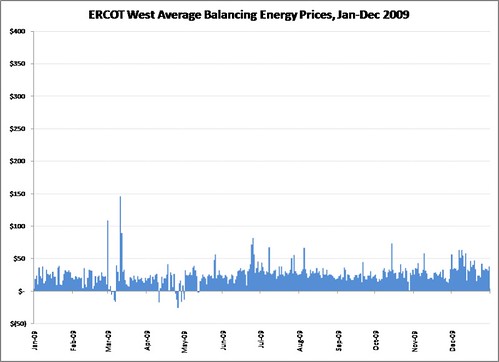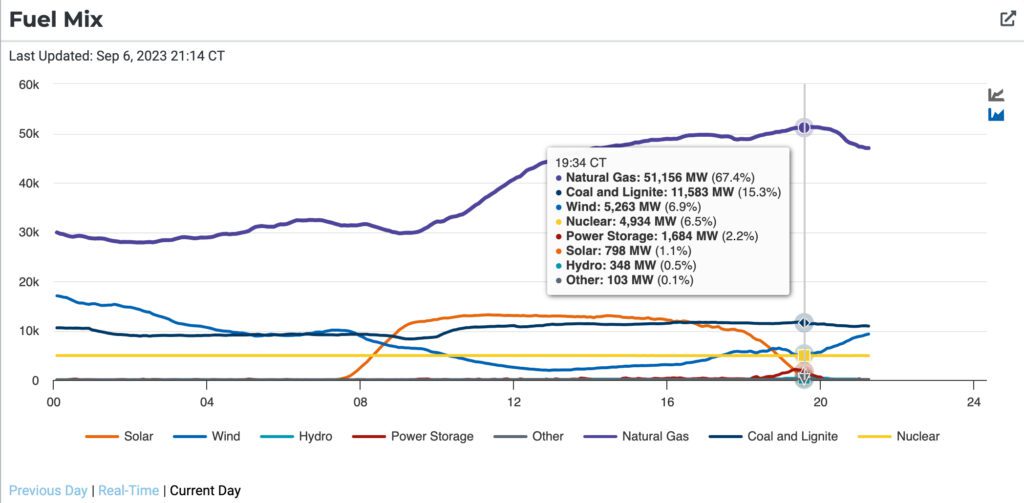ERCOT Issues First Level 2 Emergency Alert Since Winter Storm Uri
ERCOT #ERCOT

The Electric Reliability Council of Texas (ERCOT) on Sept. 6 issued an Energy Emergency Alert 2 (EEA 2) after grid conditions quickly deteriorated around sunset (7:30 p.m.) as demand soared and operating power reserves plunged. The grid operator in a statement said that the emergency operations were necessary given “a drop in operating reserves and frequency.”
The EEA 2, ERCOT’s first declared Level 2 grid emergency since Winter Storm Uri in 2021, abruptly followed a conservation appeal that was issued at about 4:55 p.m. “By entering EEA 2, ERCOT was able to utilize additional reserve resources to protect the reliability of the grid,” it said. “No power outages associated with the ERCOT grid were necessary.” While the grid operator exited emergency conditions at around 8:40 p.m., it retained its conservation appeal until 9 p.m. A Weather Watch remains in effect through Sept. 8, owing to higher temperatures that are driving high demand statewide.
A Steep Drop in Operating Reserves
An EEA declaration initiates an orderly and predetermined procedure for maximizing the use of available resources on the grid, including voluntary load reduction programs that are only available under EEA operations. An EEA 2 is typically issued when ERCOT’s operating reserves have dropped below 1,750 MW and are not expected to recover within 30 minutes. ERCOT’s EEA 2 declaration at sunset notably bypassed the grid operation’s declaration of an EEA 1, which is issued when ERCOT’s operating reserves fall below 2,300 MW. On Wednesday, ERCOT’s website suggested the grid had operating reserves of 2,388 MW when it declared the Level 2 alert.

ERCOT’s dashboard illustrated its efforts to keep delicate grid conditions balanced during the emergency conditions. At around 8 p.m., its Supply and Demand dashboard forecast precarious conditions in which available capacity barely exceeded its forecasted demand. At one point, the dashboard suggested demand would outweigh supply.
In a statement issued around 7:45 p.m. on Wednesday, ERCOT said factors that led to the tight grid conditions include high temperatures statewide and high demand due to the heat. The grid operator also noted that “solar generation starts to decline earlier in the evening hours before completely going offline at sunset,” and that wind generation was “forecasted to be low this evening during peak demand time.”
The conditions delivered a peak record for September of 82,705 MW. “ERCOT set an all-time peak demand record of 85,435 MW on August 10,” the grid operator noted. By comparison, in 2022, the August peak demand was 78,465 MW. “This summer ERCOT has set 10 new all-time peak demand records,” it said. “Last summer ERCOT set 11 new peak demand records with a high of 80,148 MW on July 20.”
ERCOT has issued multiple “Weather Watch” alerts as Texas contends with one of its hottest summers on record. Parts of the state in August suffered up to 23 consecutive days of 100-degree heat. ERCOT has also issued multiple conservation appeals in recent weeks—more than in 2021 and 2022.
Challenging Grid Conditions
The grid operator, which manages the production and flow of electricity to more than 26 million Texas customers (about 90% of the state’s total power demand), has been transparent about its challenging grid conditions, which have required balancing soaring load growth with an evolving generation portfolio. Its challenges have intensified during periods of extreme heat or extreme cold. In 2022, more than 7 GW of new wind and solar resources and 1.7 GW of energy storage resources entered the market. The grid operator’s May 3–released Seasonal Assessment of Resource Adequacy (SARA) for summer 2023, meanwhile, estimated total resources of 97 GW, including 10.4 GW of wind, and 12.6 GW of solar, and a typical thermal generating unit outage assumption of 5,034 MW.
As ERCOT released its summer SARA on May 4, however, ERCOT President and CEO Pablo Vegas and Peter Lake, former chairman of the Public Utility Commission of Texas (PUCT), sought to lay out in stark terms what they described as the state grid’s “new reality.” They suggested the increase in demand for electricity has outpaced the supply of on-demand power from power plants that can be turned on and off according to market needs. “On the hottest days of summer, there is no longer enough on-demand dispatchable power generation to meet demand on the ERCOT system,” Lake said. The grid’s “risk goes up as the sun goes down because it’s still hot at 9 p.m.,” he added.
In June, ERCOT unveiled an internal model that suggests the likelihood of an EEA is especially elevated between 8 p.m. and 9 p.m., particularly when the capacity for operating reserves is less than 3 GW. The model also suggests that the grid’s profile for load shed risk dramatically ramps up after 7 p.m., when the sun sets and its solar generation diminishes.
On Wednesday, at 7:30 p.m.—as ERCOT abruptly declared its EEA 2—the grid had begun ramping up its natural gas power and power storage supply, but it suffered a steep decline in operating reserves.
 ERCOT issued an Energy Emergency Alert 2 (EEA 2) around sunset (7:30 p.m. CST ) on Sept. 6. This image, captured from an ERCOT dashboard, how its fuel mix evolved through the day. Source: ERCOT
ERCOT issued an Energy Emergency Alert 2 (EEA 2) around sunset (7:30 p.m. CST ) on Sept. 6. This image, captured from an ERCOT dashboard, how its fuel mix evolved through the day. Source: ERCOT
ERCOT will likely issue more details about the incident in the coming days. Some industry observers have speculated that the decline may have resulted from an unscheduled power plant outage.
ERCOT declared an energy emergency. This was *likely* a big power plant tripping off line; see the frequency drop below. Storage set an all-time record when it was needed most, almost certainly preventing rolling outages. #txlege #txenergy #energytwitter pic.twitter.com/rd5k9OqjSR
— Doug Lewin (@douglewinenergy) September 7, 2023
—Sonal Patel is a POWER senior associate editor (@sonalcpatel, @POWERmagazine).

